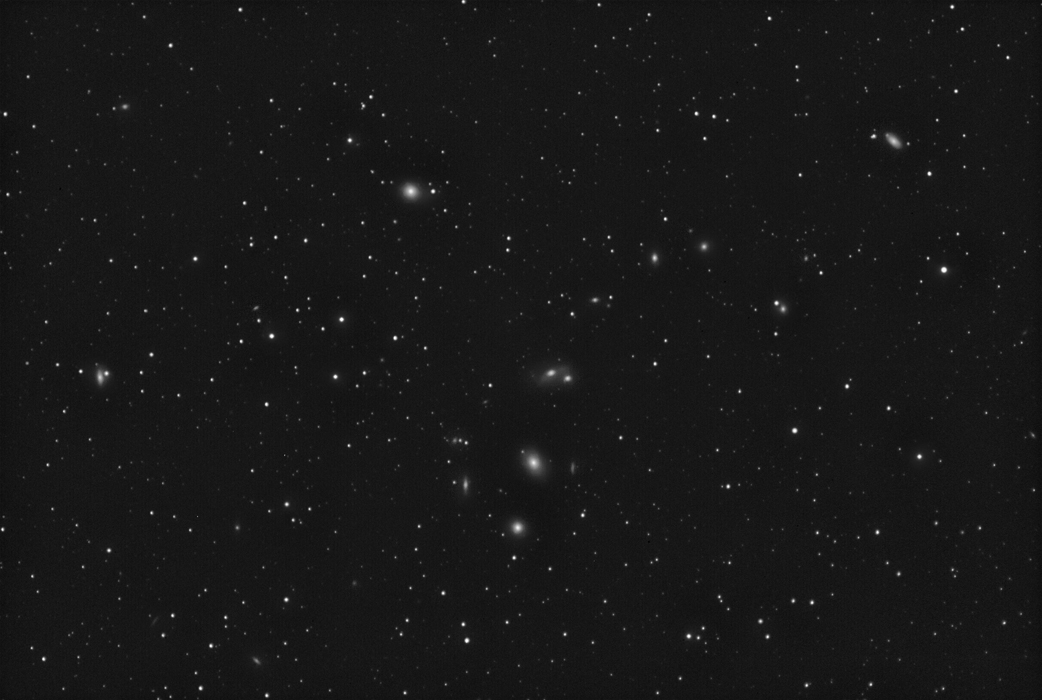M87 and Markarian's Chain Region, 200mm Canon FD lens
Characteristics:
Magnitude: varies with galaxy
Size: FOV is 4.2 x 2.9 degrees
Distance: varies with galaxy
RA: 12h 30.8m
Dec: +12 degrees 24'
Description:
This is only a 25 minute exposure
obtained through a thin layer of clouds. But it's first light for
my 200mm Canon FD lens (f2.8) coupled to my Maxcam CM10 using a very
thin profile homemade adapter (details to follow).
With the CM10, this lens gives me a FOV of 4.2 degrees x 2.9 degrees
and an image scale (measured) of 7.1 arcsec/pixel. This compares
to a FOV of 3.9 degrees x 2.6 degrees with an FSQ106 plus an STL11000,
but admittedly that set up would yield an image scale of 3.5
arcsec/pixel. Since I paid only $150.00 for this wonderful Canon
lens on E-Bay (the stars show very little coma with the lens open wide
at f2.8), and about $35.00 in parts to make the adapter, I am willing
to sacrifice some resolution at 7.1 arcsec/pixel without investing in
another scope and camera at the moment! Not to mention the fact
that the STL11000 cannot touch the CM10 when it comes to QE, especially
in the Ha range.
Photographic Details:
Date: May 28, 2006.
Scope: Canon 200mm
(f2.8) FD lens, coupled to the Maxcam CM10 with a homemade adapter
(details to follow) and mounted to the G11.
Autoguider: SBIG STV with
e-finder.
Camera: Maxcam CM10
Filter: Astronomik
clear filter.
Exposures: 25 minutes at f2.8,
unbinned (5 x 5' subs unbinned), manually
focused.
Conditions: Temperature 65 degrees F; terrible
transparency with thin clouds invading the area and Arcturus winking in
and out.
Post-processing: Debloomed, calibrated,
aligned, and median combined in Maxim. Levels and curves in Photoshop CS (16
bit format), with a touch of smoothing using Noise Ninja, which I
almost never use (needed due to the increased noise in this short
exposure). Not a lot of effort spent on this (yes, it shows), but
it provides proof of principle. I intend to have a lot of fun
with this lens later in nebula season.
Please
note: Graphics on this website
may not be reproduced without author permission.
Back to Galaxies
Home
